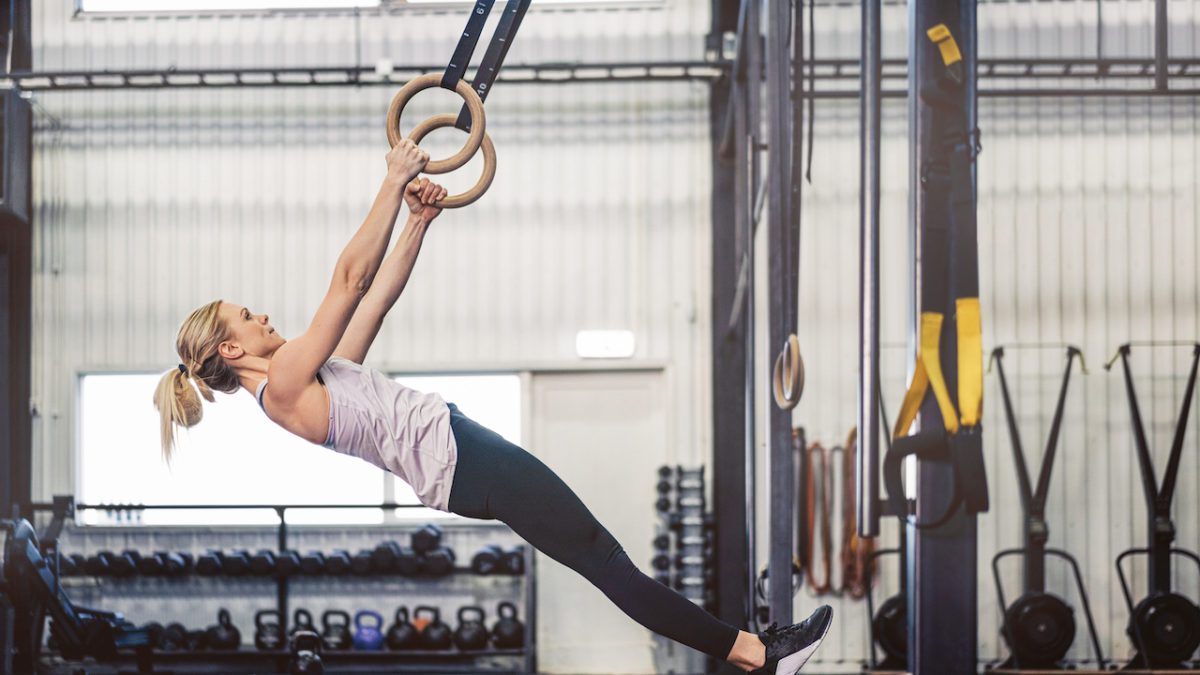Pull-Ups Are Great, But Have You Tried Inverted Rows?
This often underused exercise is arguably better suited for building climbing-specific strength in the shoulders, back, and core

While pull-ups are one of the most common exercises for building pull strength in climbing, they’re surprisingly not that similar to a lot of climbing movement. Resistance is applied along a vertical axis, in line with the body. This direction of pull translates well to vertical climbing, but as routes and boulders get steeper, the direction of pull becomes more horizontal, or perpendicular to the body. This horizontal pull movement requires specific strength in the core, back, and shoulders that the pull-up doesn’t mimic all that well.
One of the best exercises for specifically focusing on overhanging pull strength is the inverted row. Like pull ups, inverted rows strengthen the lats, but they are also great for targeting the rhomboids and traps. See the 30-second video below for a quick intro on form:
You can perform inverted rows using gymnastic rings, a TRX system, or a squat or bench press bar locked in place. To first try out the exercise, set your rings/TRX/bar around waist height. Get under and grab the rings/TRX/bar with a palms-away grip and plant your heels firmly into the ground with your legs straight out in front of you. Throughout the exercise, your body should be held in a straight line from heels to shoulders.
To start the movement, engage your shoulders down and back. Also engage your quads, glutes, and core. You initiate the pull with your back muscles. Pull your chest up to the rings/TRX/bar, hold it there for a second or two, and then lower back down. Do not disengage your shoulders at the bottom of the lower—keep them engaged and move directly into your next rep. As you pull up and release back down, do not over arch your lower back or let your butt sag.
To first test out this exercise, try it with your body at a 30-degree angle from the ground. If this is too difficult, raise the rings/TRX/bar higher or back up your feet, reducing the angle.
Progressions
If you’re able to do 10 reps of basic inverted rows with ease, there are lots of ways to increase intensity over time, with some methods being very specific to climbing.
Raised Feet
The more your body’s starting position becomes parallel with the ground, the harder the rows will be. Once you are nearing parallel, you should move your feet onto a box or raised platform. If the rows are still too easy, you can start to move beyond parallel, with your feet on a higher box or platform.
One-Arm Isometrics
This progression builds additional shoulder and core stability and is good for helping developing lock-off strength on overhanging terrain. To perform it, at the top position of the row, simply take one hand off and hold the one-armed position for two to three seconds. Your form should not slip when you take your hand off. Your back should stay square (i.e. 90-degree angle between arm and chest). If you’re using a TRX, make sure both ends are fixed! After the hold, put your hand back on and lower back down with two arms.
Rows for Posterior Chain Strength
The next progression is excellent for building posterior chain strength in climbing. This is the strength needed for keeping your feet pressed firmly on tiny footholds in overhanging terrain. For this progression, instead of keeping your heels on the box, use your toes to grip the edge of a box or push into a sturdy platform or wall. You can also try this with just one foot on at a time for extra difficulty. This progression really activates the core and builds the toe-to-shoulder tension needed for steep climbing. You can try the one-arm isometric holds in this progression as well.
No Feet
The next progression is to attempt the rows with no feet on. Tuck your legs up into your body, still keeping your back straight and perform the rows. Next, you can try this same position with one leg sticking out straight to further stress the core. Finally, if you’re at a very advanced level, you can attempt full front-lever inverted rows.
Check out this short video by Hooper’s Beta that goes through most of these variations:
One-Arm Inverted Rows
A variation of the inverted row is to perform the entire exercise one-armed—the pull up, the hold, and the lower down. This variation is best performed on a fixed ring or TRX grip rather than a bar. This variation is a real step up in difficulty from the two-handed version and is especially good for building back and core strength and shoulder stability. Try it out first with a higher angle, perhaps 45 degrees or so. All the same fundamentals apply—keep engagement through the quads, glutes, and core. Also keep your back square throughout the movement (i.e. a 90-degree angle between arm and chest).
Check out the video below for a demonstration of the exercise as well as a fun variation.
Training Program
Add inverted rows into your training program once or twice a week. You’ll first have to do some experimentation to figure out which progression is right for you. The most important factor in determining this is form. If you have poor form when completing five to eight reps, reduce the angle or try an easier progression. The variation you choose should also be influenced by what you’re trying to improve (e.g. posterior chain strength, lock-off strength, etc.).
After warming up with a couple sets of 10 reps of easier rows, execute 3 sets of 5–8 reps at your chosen level. If you find the rows too easy in your final reps of your third set, consider increasing the difficultly in your next session.


